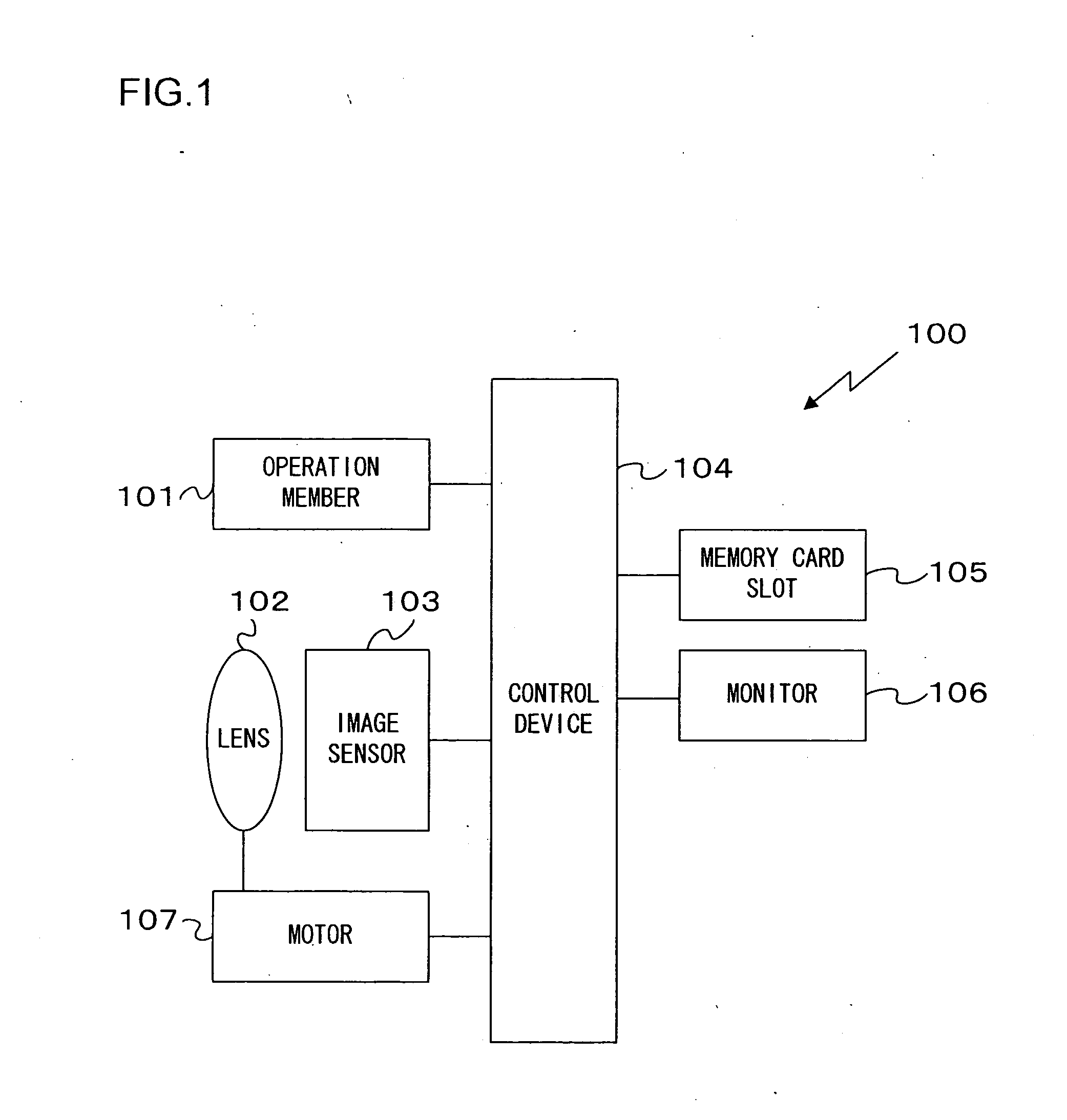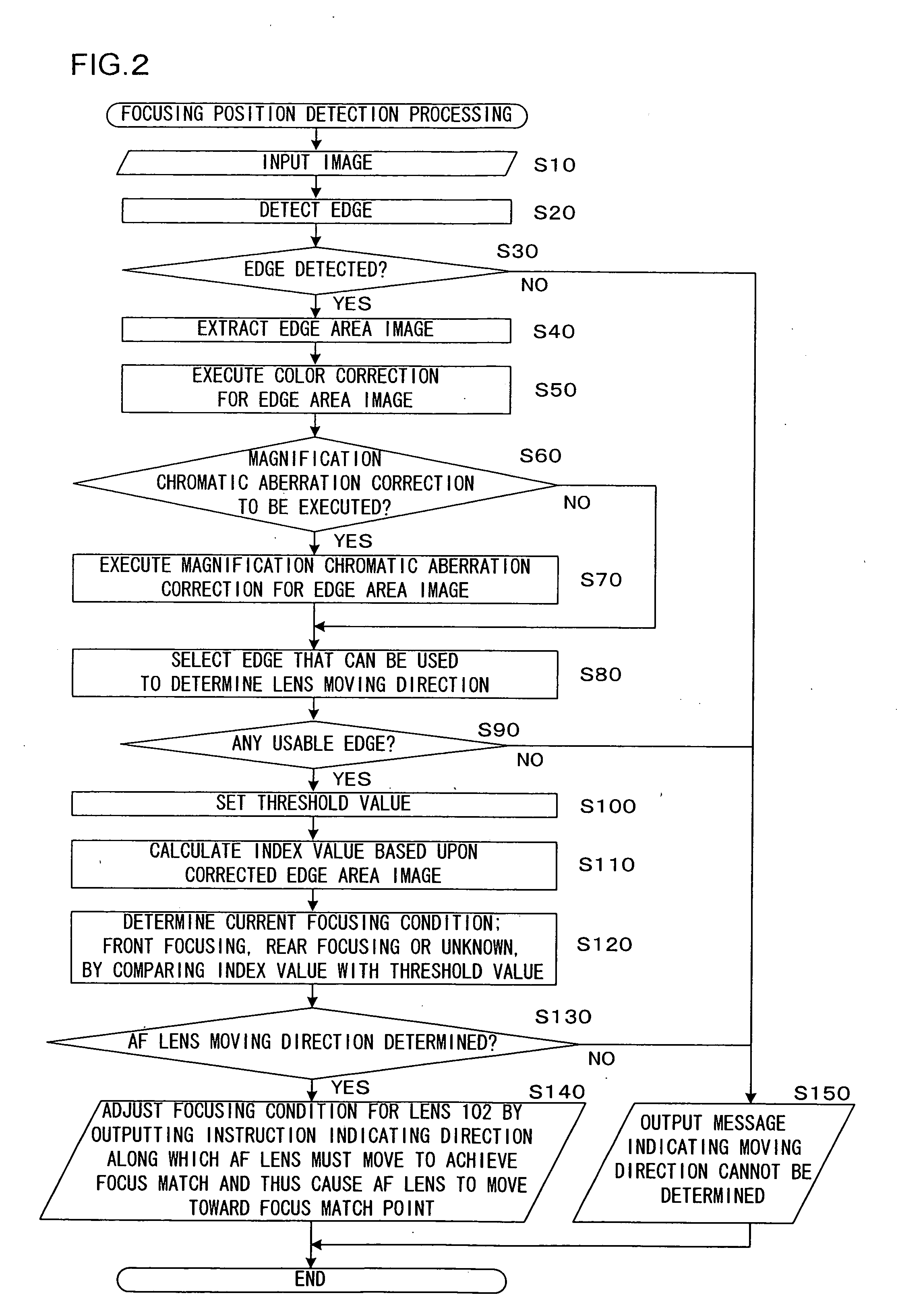Image-capturing device
a technology of image capture and af lens, which is applied in the direction of optical elements, instruments, television systems, etc., can solve the problem that the decision as to which direction the af lens should be driven to achieve a focus match cannot be made with a high degree of accuracy, and achieve the effect of reducing the offs
- Summary
- Abstract
- Description
- Claims
- Application Information
AI Technical Summary
Benefits of technology
Problems solved by technology
Method used
Image
Examples
first embodiment
[0068]Assuming that images captured in the camera 100 in the first embodiment are expressed with data in the RGB colorimetric system, different focus match positions are assumed along the optical axis in correspondence to the individual color components in an image input from the image sensor 103 to the control device 104, due to the variance among axial chromatic aberrations occurring in correspondence to the different color components, R, G and B. Accordingly, the decision as to the specific direction along the optical axis the current AF lens position is offset relative to the focus match position is made based upon an edge image in the input image by taking into consideration the varying focus match positions assumed on the optical axis in correspondence to the individual color components due to the variance in the axial chromatic aberration, so as to achieve AF control at all times while the live view image display is on.
[0069]FIG. 2 presents a flowchart of the focusing positio...
second embodiment
[0093]As a live view image input from the image sensor 103 starts, the control device 104 in the camera 100 achieved in the second embodiment executes AF (automatic focus adjustment) processing and thus executes AF control at all times while the live view image is on display by continuously executing focus adjustment while the live view image is on display. In more specific terms, assuming that an image in each frame input from the image sensor 103 to the control device 104 is expressed with data in the RGB colorimetric system, different focus match positions are assumed on the optical axis in correspondence to the individual color components, i.e., the R color component, the G color component and the B color component, due to the variance among the axial chromatic aberrations occurring in correspondence to the individual color components. Accordingly, the current focusing condition is determined based upon a difference between edge blurring widths corresponding to two different col...
third embodiment
[0119]In the second embodiment described above, the conversion edge blurring width difference Δw is calculated for different color component edges corresponding to two color components manifesting axial chromatic aberration and the focusing condition is determined based upon the conversion edge blurring width difference Δw. While axial chromatic aberration causes varying extents of blurring in correspondence to the individual color components, there is an additional factor that may need to be considered, i.e., a change in the levels of resolution corresponding to the individual color components relative to one another, attributable to the processing executed during input image generation, may alter the blurring extents and the blurring width difference between the color components.
[0120]Such a situation may arise, for instance, in an image-capturing device that generates an image by interpolating a raw image read out from a single-chip color image sensor when a raw image read from t...
PUM
 Login to View More
Login to View More Abstract
Description
Claims
Application Information
 Login to View More
Login to View More - R&D
- Intellectual Property
- Life Sciences
- Materials
- Tech Scout
- Unparalleled Data Quality
- Higher Quality Content
- 60% Fewer Hallucinations
Browse by: Latest US Patents, China's latest patents, Technical Efficacy Thesaurus, Application Domain, Technology Topic, Popular Technical Reports.
© 2025 PatSnap. All rights reserved.Legal|Privacy policy|Modern Slavery Act Transparency Statement|Sitemap|About US| Contact US: help@patsnap.com



